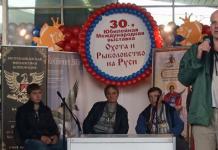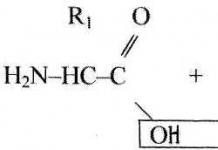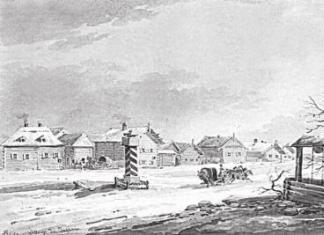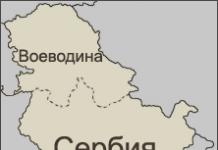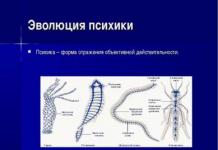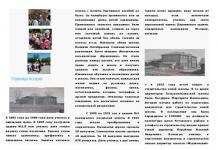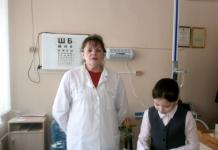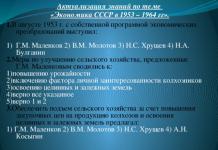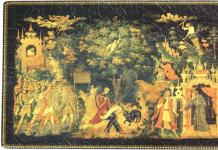Name: Potassium sodium tartrate E337
Other names: E337, E-337, Eng: E337, E-337, Sodium potassium tartrate
Group: Food supplement
Kind: Antioxidants, antioxidants
Effect on the body: safe
Allowed in countries: Russia, Ukraine, EU
Segnet's salt E337 (Sodium potassium tartrate, potassium-sodium tartrate) was named after its creator, pharmacist from France, Pierre Seignet. He discovered it in the middle of the 17th century. Antioxidant, has a salty, cooling taste. It is in the registers of food additives in almost all countries of the world.
In appearance, these are crystals with a color spectrum from blue to colorless. The process of decomposition of the additive occurs already at a temperature of 55.6°C, water of crystallization evaporates from the substance. Easily soluble in water, has a high hygroscopicity, during dissolution in water, it partially precipitates.
Rochelle salt E337 has specific electrical properties, it can polarize in a range of temperatures. Some derivatives of potassium sodium tartrate (its tetrahydrate) have piezoelectric properties.
Application:
Rochelle salt E337 is used as an antioxidant in conservation, bakery industry. As a baking powder, Rochelle salt is added to baking mixes. The field of application of the E337 additive is not limited to the food industry. Due to its electrophysical properties, potassium-sodium tartrate was involved in the production of machinery. In particular, E337 was in the pickups of telephone handsets, microphones, gramophones, hearing aids. In the second half of the 20th century, Rochelle salt was increasingly used in the manufacturing process of electrical engineering.
Additive E-337 is also used in the process of silvering mirrors, as a demulsifier of aqueous solutions in organic synthesis. In chemical laboratories, potassium sodium tartrate is essential for the detection of sugars and proteins.
Rochelle's salt E337 is also used in medicine, as part of various drugs, including effervescent, instant preparations, and also as a laxative. Approved for use in all countries of the world.
Effect on the human body:
There is currently no information on the negative impact on the human body. There is information that Rochelle salt E337 was widely used in medicine for the treatment of disorders of the digestive system, as a laxative. Normalizes the digestive processes in the body, participates in the process of removing toxins. Already long time potassium-sodium tartrate E337 is used as a morning tonic in Seidlitz homeopathic powder. The daily dose for humans has not been described.
- an organic compound, a crystalline double (potassium and sodium) salt of tartaric acid. Rochelle salt, this substance was named after a pharmacist from France, who in the 17th century made it from winemaking waste and used it as a laxative. The formula is KNaC4H4O6.4H2O. Rochelle salt is the traditional name. Chemists use: potassium-sodium tartrate 4-water or potassium-sodium tartrate tetrahydrate.
Get Rochelle salt artificially, chemical reaction tartaric acid with potassium carbonate (carbonate) and sodium.
Properties
AT normal conditions- a crystalline substance, salty in taste, with a cooling effect. Crystals can be colorless, white, bluish.
They have complex structure and shape, do not have a center of symmetry, dodecahedral. Well soluble in water, insoluble in alcohol. The reagent begins to decompose already at temperatures above +56 °C. With strong heating, it first loses water of crystallization, then decomposes into potassium-sodium carbonate, water and carbon monoxide. It has ferroelectric and piezoelectric properties. Rochelle salt is non-toxic, non-flammable, fire- and explosion-proof.
Rochelle salt crystals were the first to have late XIX centuries have discovered special electrical properties - spontaneous polarization in a certain temperature range. It turned out that the polarization of a crystal can be controlled by a strong magnetic field. After that, the whole class of substances with similar properties began to be called ferroelectrics. To date, more than seven hundred substances belong to this class.
Sodium-potassium tartrate crystals aroused even greater interest when Pierre and Jean Curie discovered that they had a piezoelectric effect that was three thousand times stronger than that of quartz crystals. The piezoelectric effect is the occurrence of electrical discharges during mechanical action on solid. On its basis, before World War II, many different electronic devices were developed: ultrasonic locators, loudspeakers, hearing aids, medical probes, telephones, microphones, and many others. Most of them were originally designed for plates cut from quartz crystals, but these were very expensive and required sophisticated equipment for cutting with diamond saws. Rochelle salt crystals were much cheaper and cut simply with wet thread. Unfortunately, they were fragile, unstable to temperature extremes and high humidity. In the end, these shortcomings were overcome by placing the plates in moisture-proof shells. The mass production of electronic piezoelectric devices based on the reagent began. As the famous academician Alexandrov said: "Segnet's salt turned out to be a gold mine for physicists."
The production of instruments and apparatus based on the piezoelectric effect stimulated the creation of a new branch of industry—the growth of large ferroelectric crystals. In the Soviet Union, during the war, it was possible to reduce the period for growing one and a half to two kilogram crystals of Rochelle salt from the initial six months to 8-9 days. The army needed them so much that they were grown even in besieged Leningrad. In total, 54 tons of crystals were grown during the war. They were used in the manufacture of laryngophones (a microphone-like device that uses vibrations of the skin on the larynx) for tankers and pilots, apparatus for underwater location and communication, piezoelectric fuses, loudspeakers, from which the population received all the news and information, etc.
Currently, Rochelle salt plates are almost never used as piezoelectrics. They were replaced by stronger crystals, such as barium titanate.
Application 
In the chemical industry - in organic syntheses for the destruction of emulsions in aqueous solutions; in analytical chemistry for preparation of buffer and standard solutions; is part of the reagents for aldehydes and ketones.
. In the food industry, as an antioxidant and baking powder, an emulsifier in cheese making; found in baking powders.
. For silvering mirrors.
. In radio engineering and electronics.
. For cleaning bronze with gilding (Rochelle salt does not interact with copper oxides, therefore only copper salts and hydrates are removed).
. For the preparation of electrolytes for galvanic coatings.
. In medicine, biology, analytical chemistry, they are used to prepare solutions for the detection of sugars and proteins.
. To obtain drugs, including laxatives in pharmacology.
. As a plant growth stimulator in agriculture.
Physical properties and applications in engineering
In addition, potassium sodium tartrate tetrahydrate is one of the first substances in which piezoelectric properties were discovered (Pierre and Jacques Curie,). Later, these properties found application in technology: first, in the interwar period in the United States (patent of the company BRUSH No. 2483647), and then in other countries (in the USSR in - gg.) Rochelle salt began to be used in pickups for electrophones, microphones, telephone handsets and other similar devices (for example, hearing aids). Especially widely this substance has found application during the increased demand for electrical engineering in post-war years. Compared to other converters, the output voltage of Rochelle salt is very high (even three thousand times more). However, converters made from it cannot be stored in a humid place, since the salt gradually spreads due to its hygroscopicity.
Chemical Properties and Applications
Sodium potassium tartrate is a component of Fehling's fluid, in which it is used to detect sugars. Rochelle salt is also used in mirror silvering using the Heinrichson method. In addition, this salt is used in organic synthesis as a demulsifier in aqueous solutions, usually in reactions using aluminum hydride. Finally, the biuret protein solution also contains potassium sodium tartrate.
Use for other purposes
Potassium-sodium tartrate is used in the food industry as an additive E337(antioxidant). It has a salty, cooling taste. This salt is also used in baking powders. The substance has also been used in medicine - as a laxative (allegedly the pharmacist Senet used this salt to help with stomach disorders). For this purpose, Rochelle salt is now often used as part of the Seidlitz powder.
see also
Write a review on the article "Rochelle Salt"
Notes
An excerpt characterizing Segnet's salt
- Call, call. Pitiful boy, - repeated Denisov.Petya was standing at the door when Denisov said this. Petya crawled between the officers and came close to Denisov.
“Let me kiss you, my dear,” he said. - Oh, how wonderful! how good! - And, kissing Denisov, he ran into the yard.
- Bosses! Vincent! Petya shouted, stopping at the door.
- Who do you want, sir? said a voice from the darkness. Petya answered that the boy was a Frenchman, who was taken today.
- AND! spring? - said the Cossack.
His name Vincent has already been changed: the Cossacks - in Spring, and the peasants and soldiers - in Visenya. In both alterations, this reminder of spring converged with the idea of a young boy.
“He was warming himself by the fire. Hey Visenya! Visenya! Spring! voices and laughter echoed in the darkness.
“And the boy is smart,” said the hussar, who was standing next to Petya. We fed him today. Passion was hungry!
Footsteps were heard in the darkness and, barefoot slapping through the mud, the drummer approached the door.
- Ah, c "est vous!" - said Petya. - Voulez vous manger? N "ayez pas peur, on ne vous fera pas de mal," he added, timidly and affectionately touching his hand. – Entrez, entrez. [Oh, it's you! Want to eat? Don't worry, they won't do anything to you. Sign in, sign in.]
- Merci, monsieur, [Thank you, sir.] - the drummer answered in a trembling, almost childish voice and began to wipe his dirty feet on the threshold. Petya wanted to say a lot to the drummer, but he did not dare. He, shifting, stood beside him in the passage. Then, in the darkness, he took his hand and shook it.
“Entrez, entrez,” he repeated only in a gentle whisper.
“Oh, what should I do to him!” Petya said to himself and, opening the door, let the boy pass him by.
When the drummer entered the hut, Petya sat further away from him, considering it humiliating for himself to pay attention to him. He only felt the money in his pocket and was in doubt whether he would not be ashamed to give it to the drummer.
From the drummer, who, on the orders of Denisov, was given vodka, mutton, and whom Denisov ordered to dress in a Russian caftan, so that, without sending him away with the prisoners, to leave him at the party, Petya's attention was diverted by the arrival of Dolokhov. Petya in the army heard many stories about the extraordinary courage and cruelty of Dolokhov with the French, and therefore, since Dolokhov entered the hut, Petya, without taking his eyes off, looked at him and cheered more and more, twitching his raised head so as not to be unworthy even of such a society as Dolokhov.
Dolokhov's appearance struck Petya strangely with its simplicity.
Denisov dressed in a chekmen, wore a beard and on his chest the image of Nicholas the Wonderworker, and in his manner of speaking, in all methods, he showed the peculiarity of his position. Dolokhov, on the other hand, who had previously worn a Persian suit in Moscow, now looked like the most prim guards officer. His face was clean-shaven, he was dressed in a Guards padded frock coat with Georgy in his buttonhole and in a plain cap put on directly. He took off his wet cloak in the corner and, going up to Denisov, without greeting anyone, immediately began to question him about the matter. Denisov told him about the plans that large detachments had for their transport, and about sending Petya, and about how he answered both generals. Then Denisov told everything he knew about the position of the French detachment.
“That’s true, but you need to know what and how many troops,” Dolokhov said, “it will be necessary to go. Without knowing exactly how many there are, one cannot go into business. I like to do things carefully. Here, if any of the gentlemen wants to go with me to their camp. I have my uniforms with me.
- I, I ... I will go with you! Petya screamed.
“You don’t need to go at all,” Denisov said, turning to Dolokhov, “and I won’t let him go for anything.”
- That's great! Petya cried out, “why shouldn’t I go? ..
- Yes, because there is no need.
"Well, you'll have to excuse me, because... because... I'll go, that's all." Will you take me? he turned to Dolokhov.
- Why ... - Dolokhov answered absently, peering into the face of the French drummer.
- How long have you had this young man? he asked Denisov.
- Today they took it, but they don’t know anything. I left it pg "and myself.
Well, where are you going with the rest? Dolokhov said.
- How to where? I’m sending you under Mr. Aspis! - Denisov suddenly turned red, exclaimed. - And I can boldly say that there is not a single person on my conscience. than magic, I pg, I’ll say, the honor of a soldier.
“It’s decent for a young count at sixteen to say these courtesies,” Dolokhov said with a cold smile, “but it’s time for you to leave it.
“Well, I’m not saying anything, I’m only saying that I will certainly go with you,” Petya said timidly.
“But it’s time for you and me, brother, to give up these courtesies,” Dolokhov continued, as if he found particular pleasure in talking about this subject that irritated Denisov. “Well, why did you take this with you?” he said, shaking his head. "Then why do you feel sorry for him?" After all, we know these receipts of yours. You send a hundred of them, and thirty will come. They will die of hunger or be beaten. So isn't it all the same to not take them?
Esaul, narrowing his bright eyes, nodded his head approvingly.
- It's all g "Absolutely, there's nothing to argue about. I don't want to take it on my soul. You talk" ish - help "ut". Just not from me.
Dolokhov laughed.
“Who didn’t tell them to catch me twenty times?” But they will catch me and you, with your chivalry, all the same on an aspen. He paused. “However, the work must be done. Send my Cossack with a pack! I have two French uniforms. Well, are you coming with me? he asked Petya.
- I AM? Yes, yes, certainly, - Petya, blushing almost to tears, cried out, looking at Denisov.
Again, while Dolokhov was arguing with Denisov about what should be done with the prisoners, Petya felt awkward and hasty; but again he did not have time to understand well what they were talking about. “If big, well-known think like that, then it’s necessary, so it’s good,” he thought. - And most importantly, it is necessary that Denisov does not dare to think that I will obey him, that he can command me. I will certainly go with Dolokhov to the French camp. He can, and I can."
To all Denisov's persuasion not to travel, Petya replied that he, too, was accustomed to doing everything carefully, and not Lazarus at random, and that he never thought of danger to himself.
“Because,” you yourself will agree, “if you don’t know exactly how many there are, life depends on it, maybe hundreds, and here we are alone, and then I really want this, and I will certainly, certainly go, you won’t stop me.” “It will only get worse,” he said.
Dressed in French overcoats and shakos, Petya and Dolokhov went to the clearing from which Denisov looked at the camp, and, leaving the forest in complete darkness, went down into the hollow. Having moved down, Dolokhov ordered the Cossacks accompanying him to wait here and rode at a large trot along the road to the bridge. Petya, trembling with excitement, rode beside him.
“If we get caught, I won’t give myself up alive, I have a gun,” Petya whispered.
“Don’t speak Russian,” Dolokhov said in a quick whisper, and at the same moment a hail was heard in the darkness: “Qui vive?” [Who's coming?] and the sound of a gun.
Tannin E 181 is used as food coloring, to give color, as well as in the manufacture of all kinds of drinks. The dye has a strongly astringent taste. Used for coloring various pastries and sweets. The solutions of colloids that are formed in water express strong tanning effects and are acidic. A large amount of tannin is found in green tea.
Tannin E 181 is used for tanning leather and fur, for pickling cotton fibers, and for making ink.
In addition, E 181 is widely used in medicine for the treatment of diarrhea, hemorrhoids, inflammatory diseases, to stop bleeding. You can strengthen blood vessels by drinking green tea regularly. Also used as an antidote for poisoning with mercury, lead or other toxic substances.
At the same time, the property of Tannin is activated to slow down the absorption of various substances in the body. From the same property, harm follows from its excessive use - diseases can occur associated with a lack of any minerals (for example, iron) in the body. In addition, in sensitive people, this substance can disrupt the functioning of the liver and kidneys, and irritate the gastrointestinal tract.
| Technological functions | Clarifier. |
| Synonyms | Tannins, tannins, gallotannins, hydrolysable tannins, tannic acid, gallotannic acid; English tannic acids, tanins (food grade), gallotannic acids, gallotannins; German Tannine, Tanninsaure, Gallotanninsaure, Gallotannine; fr. tannin, gallotannin, acide tanninique, acide gallotanninique. |
| CAS# | 1401-55-4. |
| Composition | Esters of phenolic acids with monosaccharides or polyhydric alcohols, such as pentamethadigalloylglucose (Chinese tannin). Catechins and other non-hydrolysable tannins, as well as ellagitannins (esters of ellagic acid) do not belong to food tannins. |
| Molecular mass | 500-3000. |
| Organoleptic properties | Amorphous powder, shiny flakes or loose mass, light yellow, brownish yellow or light brown. Odorless or with a slight characteristic odor and astringent astringent taste. |
| Physicochemical characteristics | Hydrolyzed to form gallic acid. Chorus. sol. in water, acetone, ethanol; cf. sol. in warm glycerin (about 1 g in 1 ml); insoluble in benzene, chloroform, ether. |
| natural source | In the wood of oak and chestnut, in the bark of willow, larch, spruce, etc. |
| Receipt | Extraction from natural sources: 1) sumac, Sicilian or American, Rhus coriera, R. Galabra, R. Thypia; 2) ink nut, growths that form on young oak shoots, for example. Quercus infectoria, (Chinese and Aleppo tannin); 3) seed pods of the container (Caesalpinia spinosa). Impurities: components of vegetable raw materials. |
| Specifications | |
| Metabolism and toxicity | They can bind bacterial toxins and poisonous salts of heavy metals in the body. |
| Hygiene standards | chipboard not specified. allowed in Russia as consistency stabilizers, thickeners, texturizers, binding agents according to TI(p. 3.6.50 SanPiN 2.3.2.1293-03); as a dye in food products according to TI in an amount according to TI (clause 3.11.7 SanPiN 2.3.2.1293-03); as a clarifying, filtering material, flocculant and sorbent in wines, alcoholic beverages, the maximum residual amount according to TI (clause 5.1.35 SanPiN 2.3.2.1293-03). |
| Application | Tannins have acid properties, which are due to phenolic groups in their molecules. Therefore, they interact with proteins, as well as with metals, precipitating them. Due to this, tannins are used to stabilize wines and beer and to process (fine) wine materials, mainly white table wines, usually in combination with gelatin fining. In accordance with the Instructions for processing wine materials with gelatin, approved by the Ministry of Agriculture and Food of the Russian Federation on 05.05.98, it is recommended to use 0.5-0.75 parts of tannin from the dose of gelatin used for gluing, that is, 0.05-1.875 g / dal. Tannins are used in the form of a 20% solution, which is prepared on the day of processing by dissolving the required amount of tannin in the processed wine material. With complex fining, tannin is introduced into the wine material a day before gelatin treatment. Tannins can be added to beer at different stages of production in amounts ranging from 0.2 to 0.7 g/l, depending on the type of beer and the technology used. In case of overdose, instead of increasing persistence, there is an increase in the haze of the beer; moreover, it tends to acquire an empty taste. Tannins are included in the list of raw materials in GOST 28616-90 “Fruit wines. General technical conditions”, GOST 28685-90 “Sparkling wines. General technical conditions". Other applications: for tanning leather, as a mordant for dyeing cotton fabrics, an astringent drug. |
TARTRAZINE E102
TARTRAZINE E102 is a food additive, yellow dye. It is produced artificially, as it is not found anywhere in nature in its pure form. In production, coal tar waste is used as a raw material.
Effect on the human body:
Tartrazine is known as one of the most harmful dyes for human health.. This explains the fact that the food additive E102 is banned in most countries. However, the food and pharmacological industries in Russia and Ukraine allow its use.
It was revealed that tartrazine causes an allergic reaction in the form of urticaria. However, studies in America in 1986 showed that rashes and other adverse reactions to a nutritional supplement occur no more than once in 10,000 cases.
There is evidence that the use of E102 causes a decrease in concentration and excessive activity in children. It is known that, together with sodium benzoate, tartrazine can cause Merkelsson-Rosenthal syndrome, accompanied by the formation of cracks in the tongue, Quincke's edema and damage to the facial nerves.
Food additive E553 is allowed in the Russian Federation in accordance with the norms and TI(See Hygiene Standards below).| Technological functions | Dye (monoazo dye). |
| Synonyms | English tartrazine, FD&C yellow no. 5 (USA), CI food yellow 4, acid yellow 23; German Tartrazin; fr. tartrazine, jaune tartrique. |
| CAS# | 1934-21-0 |
| Color Index - color index | 19140 |
| chemical name | Trisodium 5-hydroxy-1-(4-sulfonatophenyl)-4-(4-sulfonatophenylazo)-H-pyrazole-3-carboxylate. |
| Empirical formula | C 16 H 9 N 4 0 9 S 2 Na 3 |
| Molecular mass | 534,37 |
| Structural formula |  |
| Appearance | Powder or granulate water solution has a yellow color; aluminum varnish: powder. |
| Physicochemical characteristics | Spectrum in water: A1cm1% 426 nm (530). Sodium salt chor. sol. in water; cf. sol. in ethanol; insoluble in vegetable oils. Aluminum lacquer in water, alcohols, fats. Light fastness is good, heat resistance (up to 150°C) is very good, resistance to acids (including fruit acids) too. The alkali resistance is good, but in an alkaline environment the dye gives a reddish tint. |
| Receipt | 4-Aminobenzenesulfonic acid (sulfanilic acid) is diazotized and combined with 1-(4-sulfophenyl)-5-pyrosolone-3-carboxylic acid. Impurities: sodium chloride, sodium sulfate. |
| Specifications |
 |
| Metabolism and toxicity | In the process of metabolism in-to the cleavage products of tartrazine undergo azo reduction and absorption in the intestine, followed by excretion with feces and urine. In people with an allergic reaction to acetylsalicylic acid (aspirin), pseudo-allergic reactions (eg, urticaria) are occasionally possible after oral administration of tartrazine. |
| Hygiene standards | DSP 7.5 mg/kg body weight per day. In the Russian Federation it is allowed as dye in flavored soft drinks, sugary confectionery products, rich bakery and flour confectionery products, pasta, ice cream, fruit ice, desserts, including flavored dairy products, full-ration dietary food mixtures, soups in an amount up to 50 mg / kg; in glazed fruits and vegetables, canned (coloured) fruits, dry snacks based on potatoes, cereals or starch, with spices extruded or exploded spicy, alcoholic drinks, flavored wines and drinks based on them, fruit wines (still and sparkling), cider in up to 200 mg/kg; in decorative coatings, sauces, seasonings (dry and pasty), pickles, etc., salmon-like fish, surimi minced fish in an amount up to 500 mg/kg; flavored processed cheeses, fish and crustacean pastes, smoked fish, dry snacks based on potatoes, cereals or starch, with spices except for extruded or blown spicy snacks, biologically active food supplements solid, meat and fish analogues based on vegetable proteins, in canned pea puree, in bitter soda drinks, bitter wine made according to recipes agreed with the State Sanitary and Epidemiological Supervision of the Ministry of Health of the Russian Federation, in an amount of up to 100 mg / kg; in mustard, fish caviar, liquid biologically active food supplements in an amount of up to 300 mg/kg; in shellfish semi-finished products boiled in an amount up to 250 mg/kg; edible coatings of cheeses and sausages in the amount according to TI individually or in combination with other permitted dyes (clauses 3.10.8, 3.10.16, 3.11.1 SanPiN 2.3.2.1293-03); for retail sale, including for Easter eggs (clause 2.25 of SanPiN 2.3.2.1293-03). Tartrazine is the sodium salt. Calcium, potassium salts and aluminum lacquer are also allowed. |
| Application | The water-soluble coloring agent alone or in mixtures with other colorants is used for coloring confectionery, ice cream, drinks, etc. in the amount of 0.05-0.5 g/kg. Mixed with blue dyes, a green tint is obtained, which, when red dyes are added, gives colors from brown to black. The shade of the aluminum lacquer can be changed by mixing it with the lacquers of the dyes mentioned above. Lacquer is used primarily for coloring dragees. Other applications: approved in the EU and the USA and used for staining all medicines; |
CALCIUM TARTRATE Е354
- Calcium salt of tartaric acid, or calcium tartrate, is a food additive E354 belonging to the class of antioxidants.
Antioxidants are added to foods to keep them longer and protect them from rancidity and oxidation. They can be either natural or chemically synthesized.
Tartrates are salts and esters of tartaric acid, which are actively used in the food industry.
Additive E 354 is used in the pharmaceutical and food industries. Its main property is the ability to regulate the level of acidity and at the same time it is safe for humans. So use it allowed in all countries, including in baby food. In Russia, the list of products containing calcium tartrate includes flour, bakery products and alcoholic and non-alcoholic drinks.
Effect on the human body:Manufacturers do not deny that exceeding the permissible concentration of food additives can be harmful to health. It must be remembered that any substance affects the human body depending on its individual features, as well as the amount of substance. Each supplement has its own acceptable daily intake (ADI). For E354 this dose is 30 mg per kilogram of body weight per day. In such quantities, the additive does not pose a danger to human health.
| Technological functions | Acidity regulator, acidifier, antioxidant synergist, salt substitute, emulsifying salt, color stabilizer, hardener. |
| Synonyms | Calcium tartrate; English calcium tartrate, calcium L(+)-tartrate; German Calcium-L(+)-tartrate; fr. L(+)-tartrate decalcium. |
| CAS# | 3164-34-9. |
| chemical name | Calcium salt of 2,3-dihydroxybutanedioic acid. |
| Empirical formula | C 4 H 4 0 6 Ca 2H 2 0 (calcium tartrate dihydrate); C 4 H 4 0 6 Ca 4H 2 0 (calcium tartrate tetrahydrate) |
| Molecular mass | 224.18 (calcium tartrate dihydrate); 260.22 (calcium tartrate tetrahydrate). |
| Structural formula |  |
| Appearance | Colorless transparent crystals, in mass - white. |
| Physicochemical characteristics | The water solution is dextrorotatory. Solv. in water; insoluble in ethanol, oils, fats. |
| natural source | |
| Receipt | Interaction of L-tartaric acid with calcium hydroxide or calcium carbonates. Impurities: malates, other tartrates, oxalates. |
| Metabolism and toxicity | |
| Hygiene standards | DSP 30 mg/kg body weight per day in terms of C (+)-tartaric acid. Codex: permitted as an acidity regulator for jams, preserves, jelly in quantities up to 3 g/kg alone or in combination with tartaric acid, fumaric acid and its salts. Allowed in Russia. |
| Application | Tartrates form stable complexes with iron and heavy metals and thus act as antioxidant synergists. They are sometimes used as melting salts in the production of processed cheese. The slow release of potassium and calcium from their salts regulates the rate of gelation of carrageenan, alginate and pectin gels. Calcium tartrate can be used to compact plant tissues. Other applications: |
SODIUM-POTASSIUM TARTRATE E 337
Food supplement E 337 - Potassium sodium tartrate (Rochelle's salt) used in the food industry as a stabilizer and complexing agent. It also enhances the effect of antioxidants and regulates acidity.
Segnet's salt E337 was named after its creator, French pharmacist Pierre Seignet. He discovered it in the middle of the 17th century. Antioxidant, has a salty, cooling taste. It is in the registers of food additives in almost all countries of the world.
Food additive E337 is widely used in the food industry as an acidity regulator in soups and broths. In citrus marmalades, preserves and jams, jelly, an antioxidant is added in an amount of up to 3 grams per kilogram of product. In the Russian Federation, potassium-sodium tartrate is used in canning vegetables and fruits, baking bakery and confectionery products. In the manufacture of processed cheese, the food additive E337 is used as a melting salt. The antioxidant is able to regulate the rate of gelation of gels on pectin and alginates.
Effect on the human body:
When using products with the addition of E 337 inside (bakery and flour products, canned fruits and vegetables, drinks), you can not worry - they are not harmful to health and are easily excreted in the urine. Nevertheless, the permissible daily dosage - 30 mg/kg- should not be exceeded. In addition, such food is not recommended for people with disorders of the cardiovascular system (high blood pressure, heart failure), liver and kidneys.
This the additive is allowed not only in Russia, but also in many European countries.
| Technological functions | Acidity regulator, acidulant, antioxidant synergist, salt substitute, emulsifying salt, color stabilizer. |
| Synonyms | Potassium-sodium tartrate, sodium-potassium tartrate, tartrate potassium-sodium, sodium-potassium tartrate, potassium-sodium tartrate, Rochelle's salt; English potassium sodium L(+)-tartrate, sodium-potassium L(+)-tartrate, potassium sodium dextro-tartrate, seignette salt, rochelle salt; German Natrium-Kalium tartrate, Natrium-Kalium-L(+)-tar-trat; fr. tartrate de sodium-potassium, L(+)-tartrate de sodium-potassium. |
| CAS# | 6381-59-5. |
| chemical name | Sodium-potassium salt of 2,3-dihydroxybutanedioic acid. |
| Empirical formula | C 4 H 4 0 6 NaK 4Н 2 0 |
| Molecular mass | 282,23 |
| Structural formula |  |
| Organoleptic properties | Colorless transparent crystals, in mass - white, have a salty, cooling tongue taste. |
| Physicochemical characteristics | The water solution is dextrorotatory. Solv. in water (1 g in 1 ml); insoluble in ethanol, oils, fats. |
| natural source | In many types of vegetables and fruits in the form of tartaric acid. |
| Receipt | Interaction of L-tartaric acid with caustic soda and caustic potash or sodium and potassium carbonates. Impurities: malates, other tartrates, oxalates. |
| Specifications |  |
| Metabolism and toxicity | According to the content of tartaric acid. |
| Hygiene standards |
DSP 30 mg/kg There are no hazards according to GN-98. Codex: allowed as an acidity regulator for the following food products: soups, broths in the amount of up to 250 mg/kg of the finished product; jams, preserves, jellies, citrus marmalades up to 3 g / kg, individually or in combination with, and its salts to maintain a pH between 2.8 and 3.5; GMP margarines. In the Russian Federation, it is allowed in canned fruits and vegetables in the amount according to TI(p. 3.1.18 SanPiN 2.3.2.1293-03); in wines, drinks, food concentrates and other products, in bakery and flour confectionery products in the amount according to TI individually or in combination with tartaric acid and tartrates (clause 3.2.3,3.6.52 SanPiN 2.3.2.1293-03). |
| Application |
Tartrates form stable complexes with iron and heavy metals and thus act as antioxidant synergists. They are sometimes used as melting salts in the production of processed cheese. The slow release of potassium and calcium from their salts regulates the rate of gelation of carrageenan, alginate and pectin gels. Sodium potassium tartrate can be used as a salt substitute. Rochelle salt E 337 is used as an antioxidant in conservation, bakery industry. As a baking powder, Rochelle salt is added to baking mixes. The field of application of the E337 additive is not limited to the food industry. Due to its electrophysical properties, potassium-sodium tartrate was involved in the production of machinery. In particular, E337 was in the pickups of telephone handsets, microphones, gramophones, hearing aids. In the second half of the 20th century, Rochelle salt was increasingly used in the manufacturing process of electrical engineering. Additive E 337 is also used in the process of silvering mirrors, as a demulsifier of aqueous solutions in organic synthesis. In chemical laboratories, potassium sodium tartrate is essential for the detection of sugars and proteins. Rochelle's salt E337 is also used in medicine, as part of various drugs, including effervescent, instant preparations, and also as a laxative. Approved for use in all countries of the world. Other applications: in the production of pharmaceuticals. |
POTASSIUM TARTRATES Е336
(i) POTASSIUM TARTRATE 1-SUBSTITUTED; (ii) POTASSIUM TARTRATE, 2-SUBSTITUTED
- Potassium tartrate (Potassium tartrate, dipotassium tartrate) is an average salt of tartaric acid with the chemical formula C4H4K2O6;
- Potassium bitartrate (Potassium bitartrate) is an acid salt of tartaric acid. Chemical formula KC4H5O6. Also known as tartar, cream of tartar. Found in the juice of many berries.
Potassium tartrates - food additive E336, used in food products as an antioxidant, acidifier, acidity regulator, emulsifier. Additive E336 also stabilizes the color of products, enhances the action of antioxidants.
Additive E336 is a mixture consisting of two organic substances that are similar in their physical and chemical properties:
They are often confused with each other, so you should pay attention that dipotassium tartrate and potassium bitartrate are different compounds.
In the Russian Federation and Ukraine, the use of this food additive is allowed.
Potassium tartrates are successfully used in winemaking and in the production of food additive E334 - tartaric acid. You can find potassium salts of tartaric acid in instant soups, jellies and sweets with jelly filling, jams and marmalades. Cream of tartar is added as a baking powder to confectionery and bakery products.
Since the food antioxidant E336 is of natural origin, the harm from its effect on the human body is negligible. The food supplement has an effect on the cardiovascular system, reducing the flow of venous blood. This property of cream of tartar can alleviate the condition of patients with varicose veins of the legs and colon. Potassium tartrates have a slight diuretic and laxative effect, salts help regulate the functioning of the gallbladder. Cream of tartar is not recommended for eating with diarrhea and flatulence.
| Technological functions | |
| Synonyms | Monopotassium tartrate and dipotassium tartrate, tartrate and sour potassium tartrate, single-substituted potassium tartrate - potassium hydrotartrate, cream of tartar; English potassium L(+) tartrate, monopotassium tartrate, dipotassium tartrate; German Kalium tartrate, Kalium-L(+)-tartrate; fr. tartrate de potassium, L(+)-tartrate de potassium. |
| CAS# | 868-14-4 (monopotassium tartrate); 6100-19-2 (dicaltartrate). |
| chemical name | Potassium salts of 2,3-dihydroxybutanedioic acid |
| Empirical formula | C 4 H 5 0 6 K (monopotassium tartrate); C 4 H 4 0 6 K2 1/2 H2O (dicaltartrate). |
| Molecular mass | 188.18 (monopotassium tartrate); 235.28 (dicaltartrate). |
| Structural formula |  |
| Appearance | White crystals. |
| Physicochemical characteristics | Right-handed. Solv. in water; insoluble in ethanol, oils, fats. |
| natural source | In many types of vegetables and fruits in the form of tartaric acid. |
| Receipt | Interaction of L-tartaric acid with caustic potash or potassium carbonates. Impurities: malates, other tartrates, oxalates. |
| Metabolism and toxicity | According to the content of tartaric acid. |
| Hygiene standards | ADI 30 mg/kg body weight per day as L(+)-tartaric acid. Codex: permitted as food acidity regulators: soups, broths in the amount of up to 250 mg/kg of the finished product; jams, marmalades, jellies, citrus marmalades up to 3 g/kg alone or in combination with tartaric acid, fumaric acid and its salts to maintain a pH between 2.8 and 3.5; GMP margarines; grape juice and concentrated grape juice, preserved with only physical methods, GMP. In the Russian Federation, canned fruits and vegetables are allowed in the amount according to TI (clauses 3.1.4, 3.1.18 SanPiN 2.3.2.1293-03); in wines, drinks, food concentrates and other products, in bakery and flour confectionery products in the amount according to TI individually or in combination with tartaric acid and tartrates (clause 3.2.3,3.6.52 SanPiN 2.3.2.1293-03). |
| Application | Tartrates form stable complexes with iron and heavy metals and thus act as antioxidant synergists and color stabilizers. They are sometimes used as melting salts in the production of processed cheese. Cream of tartar is convenient as a slow-acting acidifier in baking powders, as part of baking powder. The slow release of potassium from tartrate regulates the rate of gelation of carrageenan, alginate and pectin gels. Potassium tartrate allows you to quickly precipitate tartar from young wine. Other applications: in the production of pharmaceuticals. |
SODIUM TARTRATES E335
(i) SODIUM TARTRATE 1-SUBSTITUTED; (ii) SODIUM TARTRATE, 2-SUBSTITUTED
Food additive E335- belongs to the group of natural antioxidants, also plays the role of an acidity regulator, salt substitute, acidifier, emulsifier, fixative and stabilizer of coloring agents. Protects products from rancidity, increases their shelf life, promotes color stability.
As an acidity regulator, sodium tartrate is added to instant soups and dry broths. The sodium salt of tartaric acid is widely used in the production of confectionery, in sweets with jelly filling, jellies and jams, preserves, fillers, marmalade, canned vegetables and fruits. In a certain amount, the food additive E335 is used in the production of light oils and margarines.
Sodium tartrate is approved for use in the food industry in most countries, including Ukraine and Russian Federation.
Effect on the human body:
Food additive E335 does not pose a danger to the human body when consumed in reasonable quantities.
The maximum allowable daily dose of its consumption is 30 milligrams per kilogram of human weight. You can be poisoned by salt vapor, so that poisoning does not occur, the concentration of sodium tartrate in the air should not exceed 10 milligrams per cubic meter. If this concentration is exceeded, it is possible to burn the respiratory tract.
| Technological functions | Acidity regulators, acidifiers, antioxidant synergists, salt substitutes, emulsifying salts, color stabilizers. |
| Synonyms | Monosodium tartrate and disodium tartrate, tartrate and acidic sodium tartrate, sodium hydrogen tartrate (1-substituted sodium tartrate); English sodium L(+)-tartrate, monosodium tartrate, diso-dium tartrate; German Natrium tartrate, Natrium-L(+)-tartrate; fr. tartrate de sodium, L(+)-tartrate de sodium. |
| CAS# | 526-94-3 (monosodium tartrate); 868-18-8 (disodium tartrate); 6106-24-7 (disodium tartrate dihydrate). |
| chemical name | Sodium salts of 2,3-dihydroxybutanedioic acid. |
| Empirical formula | C 4 H 5 0 6 Na-H 2 0 (monosodium tartrate); C 4 H 4 0 6 Na 2 (disodium tartrate); C 4 H 4 0 6 Ka 2 2 H 2 0 (disodium tartrate two-water). |
| Molecular mass | 190.10 (monosodium tartrate); 194.06 (disodium tartrate); 230.08 (disodium tartrate dihydrate). |
| Structural formula |  |
| Appearance | White crystals. |
| Physicochemical characteristics | Right-handed. Solv. in water (1 g in 3 ml); insoluble in ethanol, oils, fats. |
| natural source | In many types of vegetables and fruits in the form of tartaric acid. |
| Receipt | Interaction of L-tartaric acid with caustic soda or sodium carbonates. Impurities: malates, other tartrates, oxalates. |
| Specifications | Sodium tartrate 2-substituted:  |
| Metabolism and toxicity | According to the content of tartaric acid. |
| Hygiene standards | DSP 30 mg/kg body weight per day in terms of C +)-tartaric acid. Hazards according to GN-98: MPC in the air of the working area 10 mg/m3, hazard class 3. codex: approved as acidity regulators for the following foods: soups, broths in the amount of up to 250 mg/kg of the finished product; jams, preserves, jellies, citrus marmalades up to 3 g / kg, individually or in combination with, and its salts to maintain a pH between 2.8 and 3.5; GMP margarines. In the Russian Federation are allowed in jams, jellies, marmalades and other similar products, including low-calorie, canned fruits and vegetables in quantities according to TI (clauses 3.1.6, 3.1.18 SanPiN 2.3.2.1293-03); in wines, drinks, food concentrates and other products, in bakery and flour confectionery products in the amount according to TI individually or in combination with tartaric acid and tartrates (clauses 3.2.3, 3.6.52 SanPiN 2.3.2.1293-03). |
| Application | Cm. . |
PACKAGING GUM Е417
Container gum Е417 is a stabilizing agent designed to maintain the viscosity and consistency of food products. For example, pectin has a similar effect. Additive E417 belongs to the group of foam stabilizers, which are good emulsifiers and are added to liquid consistency products to form and retain foam.
The main and most important quality E 417 is increased strength and greater elongation. The gum mixes well with various substances and forms stable suspensions and elastic gels. Substances based on tara gum are thermoreversible.
The properties of the gum container can be compared with the properties of guar gum, it is highly soluble in water, however, the heated gum container solution has a higher viscosity value and allows fine particles to be stabilized for a longer period.
In Russia, the additive E417 is approved for use in some products according to their manufacturing technology. At the same time, the maximum allowable amount for ingestion has not been established, although previously it was 0.25 mg / kg of body weight per day.
Effect on the human body:
Currently this supplement is recognized as completely safe for humans. But at elevated concentrations, some discomfort from the gastrointestinal tract (flatulence and bloating) is possible.
| Technological functions | Thickener, stabilizer |
| Synonyms | Peruvian tree seed gum, container; English tara gum, tara, Peruvian gum; German Taga, Tarakernmehl, Taragummi, Peruanischesjohannisbrotkernmehl; fr. gomme de tara, tara. |
| CAS# | 39300-88-1 (container, modified container); 11078-30-1 (D-galacto-D-mannan). |
| Molecular mass | up to 300,000. |
| Composition | Neutral galactomannan, consisting of D-mannose and D-galactose in a ratio of 3:1. |
| Structural formula | The linear main chain consists of mannose residues linked by β-(1,4) glycosidic bonds; every third mannose is linked to galactose by an α-(1,6) bond. |
| Appearance | Powder from white to yellowish color. |
| Physicochemical characteristics | The quality is described by the content of galactomannans and the viscosity of a 1% solution: 2.5-3.5 Pa s (cooked in the cold), 3.0-5.0 Pa s (cooked by heating). Chorus. sol. in water; insoluble in ethanol, org. solvents. |
| natural source | In the endosperm of the seeds of the tare shrub Caesalpina spinosa of the Leguminosae family. |
| Receipt | Separation of the peel of seeds (38-40%) and embryos (38-40%), grinding of the isolated endosperm (about 20%). Impurities: the remains of the peel of seeds and embryos. |
| Specifications |
 |
| Metabolism and toxicity | Not cleaved by digestive enzymes, the intestinal microflora can only partially cleave and destroy the galactose side chains. |
| Hygiene standards | chipboard not defined. Hygienic standards for quality and safety (SanPiN 2.3.2.1078-01): |
| Application | Tara gum can be used in place of guar gum or locust bean gum. Synergistic strengthening of the gel on agar, carrageenan and xanthan is weaker than in the case of locust bean gum. Tara gum is mainly used in gelling mixtures with xanthan, gellan, carrageenan, etc. |
| Commodity forms | Typically commercial gum contains 80-85% galactomannans. |
THAUMATIN E 957
Thaumatin is present in the fruits of the Thaumatococcus danielli shrub, common in West Africa. In finished form, it is an odorless cream-colored powder. It has a rich sweet taste (it is about 2000 times sweeter than sucrose). But its taste is noticeably different from sugar, and the taste of Thaumatin appears gradually and lasts for a long time.
In the world food antiflaming E957 Thaumatin is allowed in many countries, among them the Russian Federation, the European Union, Canada, Japan, the USA, Australia, Israel, etc. At the same time, it performs the function of a sweetener and, in small doses, a flavor and aroma enhancer.
Effect on the human body:The daily dose of thaumatin for humans has not been described. It is believed that the food supplement E957 is absolutely safe for health. In most countries, it is allowed to use this sweetener on an industrial scale. In Russia, the substance did not pass the necessary tests, which is why it does not have permission for use in the food industry.
| Technological functions | Sweetener, flavor and aroma enhancer. |
| Synonyms | English thaumatin, katemfe; German Thaumatin; fr. thaumatine. |
| CAS# | 53850-34-3. |
| Composition | A polypeptide of 207 amino acid residues. |
| Organoleptic properties | An odorless creamy powder with a strong sweet taste (several hundred times sweeter than sucrose), which does not appear immediately, but lasts a very long time. There is a licorice flavor. |
| Physicochemical characteristics | Chorus. sol. in water; insoluble in fatty solvents. |
| natural source | Mature fruits of the African katemfe shrub Thaumatococcus danielli (Maranthaceae). |
| Receipt | By extracting the fruit of the catemfe with water. Impurities: other in-va, extracted from the fruit. |
| Specifications |  |
| Metabolism and toxicity | It breaks down like a protein, no side effects were found. |
| Hygiene standards | chipboard not defined. There are no hazards according to GN-98. Legislative approvals for use in food are available in Australia, Japan, Canada, USA. EU: Approved for sweetening the following products: confectionery products based on cocoa or dried fruits, sugar products, ice cream, all low-calorie or sugar-free products up to 50 mg/kg; sugar-containing chewing gum up to 10 mg/kg; biologically active and other food additives up to 400 mg/kg; table sweeteners QS. In the Russian Federation, it is allowed as an additive that enhances and modifies the taste and aroma of a food product, in chewing gum with sugar in an amount up to 10 mg/kg; in desserts up to 5 mg/kg; in soft drinks with flavorings in an amount of up to 0.5 mg / l (clause 3.14.10 SanPiN 2.3.2.1293-03); when combined with acesulfame potassium, aspartame and thaumatin in the manufacture of chewing gum, the maximum level of each should be proportionally reduced, i.e. the total mass should not exceed 100%; as a sweetener in confectionery products with reduced calorie content or without added sugar, including those based on starch, cocoa, dried fruits; in chewing gum without added sugar; in ice cream (except milk and cream), fruit ice with a reduced calorie content or without added sugar in an amount up to 50 mg/kg; in biologically active food supplements: vitamins and minerals in the form of syrups and chewable tablets in amounts up to 400 mg/kg (clause 3.15.8 of SanPiN 2.3.2.1293-03); for retail sale (clause 2.22 of SanPiN 2.3.2.1293-03). |
| Application | Thaumatin is commonly used as a sweetener for specialty chewing gums. Sweetness can be lost when the protein is denatured. At a very low dosage, thaumatin exhibits flavor and aroma enhancer properties, so that the threshold concentrations of some aromas are clearly reduced. |
| Commodity forms | Powder or concentrated solutions. |
THERMALLY OXIDATED SOYBEAN OIL WITH MOHO- AND DIGLYCERIDES OF FATTY ACIDS E 479
- The fat left after frying in a pan, which all housewives are so afraid of, is nothing more than additive E 479.
Thermally oxidized oils are used to prevent foaming and crystallization of fats and oils. E479b is used as an emulsifier for the production of emulsions, margarines, food waxes.
E479b is part of:
- prepared fats for deep frying,
- margarine,
- oils and fats with long shelf life.
The permissible daily intake of the additive E 479b is no more than 15 mg. The additive does not have a permit for use in food production in the Russian Federation. Thermally oxidized oils are not allergens. In the production of baby food, the additive E479b is not used. People with diseases of the stomach and intestinal tract should be cautious about the use of products with the addition of thermally oxidized oils.
| Technological functions | Emulsifier, separator, defoamer. |
| Synonyms | Oxystearin, thermooxidized soybean oil; English oxystearin, thermoxydated sojaoils, TOSOM; German geblasene Ole, Oxistearine, Thermoxydierte Ole; fr. oxystearine. |
| Composition | Reaction mixtures esters cross-linked fatty acids with polymerized glycerol in excess of neutral fat, additionally esterified with monoglycerides or free glycerol. |
| Organoleptic properties | Oily or waxy substance from yellow to light brown. |
| Physicochemical characteristics | T pl above 40°C. Chorus. sol. in hot oil; cf. sol. in hot water; insoluble in cold water, fat, oil. |
| natural source | Contained in used deep fat as an undesirable product, its quantity characterizes the degree of spoilage of deep fat. |
| Receipt | When pure fat is gently oxidized with air, "oxystearin" is formed. With rapid oxidation at 200°C, polymerization products are formed - "thermally oxidized soybean oil". If monoglycerides or glycerol are present in the oxidation process, or thermally oxidized soybean oil is esterified with monoglycerides or free glycerol, "thermally oxidized soybean oil with mono- and diglycerides of fatty acids" is obtained. Impurities: reaction mixtures may contain hydroxy acids, keto acids and various peroxides, or sulfites and sulfates added to destroy the peroxides. |
| Specifications |  |
| Metabolism and toxicity | The digestibility of these products is low. In normal household use, fats for frying, deep-frying, etc. the same products are formed. In this amount, their intended use as a dietary supplement should not be hazardous to health, even if the available data are (yet) insufficient for a complete toxicological assessment. |
| Hygiene standards | ADI 25 mg/kg body weight per day (for oxystearin). There are no hazards according to GN-98. Codex: oxystearin is allowed in 12 standards for edible vegetable oils as a crystallization inhibitor up to 1250 mg/kg. EU: in working documents E479 is divided into: thermally oxidized soybean oil (E479a) - allowed for QS release emulsions; thermooxidized soybean oil esterified with mono- and diglycerides (E479b), in QS baking margarines. (clause 3.6.8 SanPiN 2.3.2.1293-03). |
| Application | Oxystearins are added to edible fats and oils as an antifoam agent and to prevent crystallization (50-100 mg/kg). Thermally oxidized soybean oil is used in release waxes and emulsions and as an antifoam agent. Polymerized fats containing mono- and diglycerides are used as emulsifiers in separating emulsions and margarines for baking. Other applications: as a foam retarder or antifoam agent. |
| Commodity forms | Under the names "oxystearin", "thermally oxidized soybean oil", "thermally oxidized soybean oil with mono- and diglycerides of fatty acids" three different products are sold, and the names are sometimes confused. In addition, there are mixed products. |
TIABENDAZOL E233
Many countries, including the Russian Federation, allow the use of thiabendazole in the food industry. But the states that are part of the European Union recognize it only as a pesticide.
| Technological functions | preservative. |
| Synonyms | Mintezol; English thiabendazole; German Thiabendazol, Tiabendazol (in pharmaceuticals); fr. thiabendazole. |
| CAS# | 148-79-8. |
| chemical name | 2-(4-Thiazolyl)-benzimidazole. |
| Empirical formula | C 10 H 7 N 3 S |
| Molecular mass | 210,25 |
| Structural formula |  |
| Organoleptic properties | White crystalline powder, odorless and tasteless. |
| Physicochemical characteristics | Tbp 304-305°C. Solv. in water (solubility is higher, the lower the pH, maximum at pH 2.2); insoluble in alcohols. |
| Receipt | Condensation of 4-cyanothiazole with ortho-phenylenediamine in the presence of an acid catalyst, followed by precipitation with alcohol. Impurities: carriers and solvents. |
| Specifications |  |
| Metabolism and toxicity | The absorption rate of thiabendazole is negligible, so it can be used in medicine. A small amount of absorbed in-in is excreted from the body with urine in the form of glucuronides. |
| Hygiene standards | Chipboard is missing. In the Russian Federation does not have permission. |
| Application | Thiabendazole is a fungistatic, i.e. an anti-mold agent, although its mechanism of action against moulds is unknown. It is added to the emulsion or solution in the amount of 0.1-0.45% for the treatment of plants, especially citrus fruits and bananas, before and after harvest. Part of the residual amount of thiabendazole (5-12%) from the peel of citrus fruits passes into the pulp, and part (7-14%) falls on the hands. Residues of thiabendazole chor. removed with both warm and cold water. In the EU, thiabendazole is currently only recommended for use as a pesticide. Other applications: In medical practice, thiabendazole is used as a fungistatic agent in skin disinfectant sprays and as an anthelmintic. |
| Commodity forms | Individual substance, wax with 0.1-0.5% thiabendazole, immersion bath concentrates with or without wax, lacquer-like pastes. |
THIOMEA
| Technological functions | preservative. |
| Synonyms | Thiocarbamide. |
| CAS# | 62-56-6. |
| Empirical formula | CH4N2S |
| Molecular mass | 76,14 |
| Structural formula |  |
| Properties and application | Aqueous solutions of thiocarbamide at a concentration of 500 mg/kg can reduce or slow down enzymatic browning and microbial spoilage of (cut) fruits, but are not used in foods due to toxicity (thiourea is a carcinogen, and also blocks the thyroid gland). MPC of thiourea in the air of the working area is 0.3 mg/m3, hazard class 2; |
SODIUM THIOSULFATE E 539
- Previously food emulsifier E 539 Sodium thiosulfate used in the food industry as an antioxidant and complexing agent, for example, to add to iodized salt and flour. But in 2010 banned in Russia. Also, this additive does not have permission in the EU.
In the food industry, sodium thiosulfate is mainly used as an antioxidant for iodized salt and as an improver in the quality of flour and bread. As a flour improver, food additive E 539 can act as an independent component or be used in combination with a number of other similar improvers. Sodium thiosulfate is included in iodized salt in a proportion of not more than 250 mg per 1 kg of salt. In the baking process mass fraction does not exceed 0.002 percent of the total mass of flour or up to 50 mg per 1 kg of product. In addition to the food industry, the additive E 539 is widely used in medicine.
It is part of complex baking improvers, and is also used as an individual baking improver of restorative action. It is recommended to use restorative improvers to change the rheological properties of wheat flour dough with excessively strong or short-tearing gluten. At the same time, the volumetric yield of bread increases, the crumb becomes more elastic, friable, cracks and undermining are smoothed out on the surface of the products.
When used individually, sodium thiosulfate is added together with baker's yeast in the amount of 0.001-0.002% by weight of flour, depending on the method of baking bread (hearth or tin). To ensure an accurate dosage of the improver, prepare its aqueous solution in a ratio of 1:20. The solution can be stored for no more than a day in a closed vessel made of a material that is not susceptible to corrosion.
Sodium thiosulfate is also used to stabilize iodine in the production of iodized salt in amounts up to 250 mg/kg.
Other applications: in pharmaceuticals as an anti-inflammatory agent, an antidote for poisoning with arsenic, mercury compounds, etc.; in textileRochelle salt "chda" (potassium-sodium tartrate, tartrate, potassium-sodium tartrate) is a tetrahydrate of sodium-potassium double salt of tartaric acid in the form of colorless or white hygroscopic crystals of the rhombic system. We offer to buy this product in our company.
The material is obtained in industry by the interaction of tartaric acid with carbonic sodium and potassium salts. When produced in this way, it becomes possible to increase the size of the crystals if necessary. In laboratory practice, the reagent is synthesized by precipitation from a heated solution of acidic potassium tartrate in a finely crystalline form by adding stoichiometric amounts of sodium carbonate.
Rochelle salt, the price per kg of which we have is low, is characterized by weak alkalinity and increased hygroscopicity. It mixes well with water, but does not dissolve in ethyl alcohol. When heated to 55.6°C, the reagent begins to decompose. It has piezoelectric properties, which led to its demand in technology: in telephone handsets, pickups of electrophones, hearing aids, microphones and other similar devices.
Application area
Potassium-sodium tartrate, whose price is favorable in our company, is used as a demulsifier in aqueous solutions, as well as in reactions using aluminum hydride in organic synthesis processes. It also applies:
- as part of Fehling's liquid for the detection of sugars;
- for the determination of proteins in solutions by the biuret method;
- as a restoring agent in silvering mirrors using the Heinrichson method;
- to increase the life of cigarette paper in the manufacture of cigarettes;
- as an emulsifier in cheese making, an antioxidant additive and baking powder E337, as part of baking powders in the food industry;
- as a reducer in the printing industry;
- to increase the time interval before the plaster begins to harden in construction;
- as a component of Seidlitz powder in the production of laxatives, as well as in the production of effervescent and instant preparations;
- to increase the saturation of the solution with anodes, create a good uniform surface and provide the ability to work at high concentrations in the composition of electroplating baths;
- when cleaning bronze with gilding, since the reagent does not react with copper oxides;
- as a plant growth stimulator in agriculture;
- as a desalting agent in the chemical industry.
This material is sold in our organization at an affordable cost, you can buy it in a package of 25 kg.
Precautionary measures
The product is non-toxic, non-flammable, non-flammable and does not form explosive mixtures with air. According to the degree of impact on the body, it belongs to the group of substances of the third hazard class. When working with it, it is necessary to use protective equipment: plastic goggles, thick rubber gloves, an industrial respirator, special shoes and clothing. This item is sold in Rs. LLC "AKVAKHIM"
Storage Features
Reagent should be stored in closed containers in dry, ventilated warehouses. Shelf life - 36 months from the date of manufacture.
Rochelle salt: where is it sold with delivery in the Russian Federation?
We sell chemicals affordable prices. If you want to buy high-quality goods with shipment all over Russia, we suggest that you familiarize yourself with the full price list of our online store on the main page of this site. To place an order, simply click on the green button above and enter your contact details in the field that opens. Our employee in working time will call you back.






